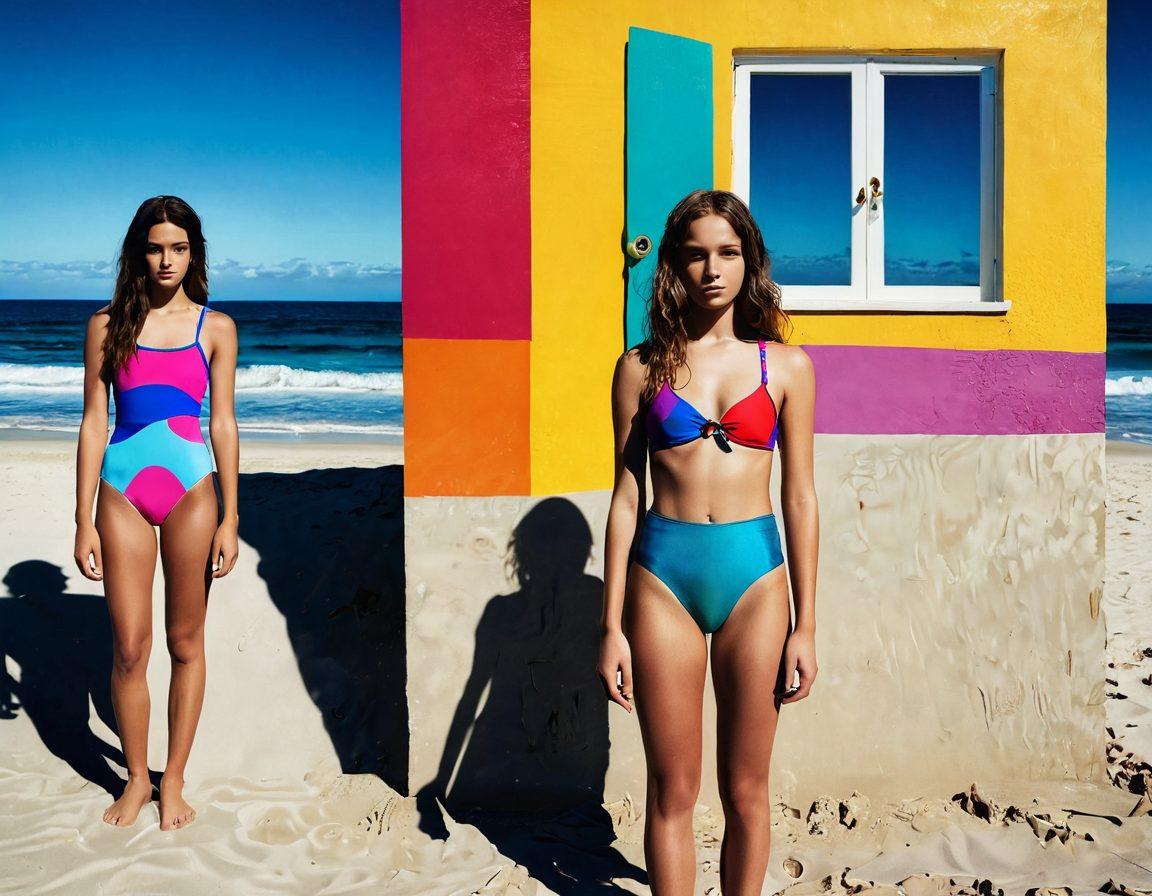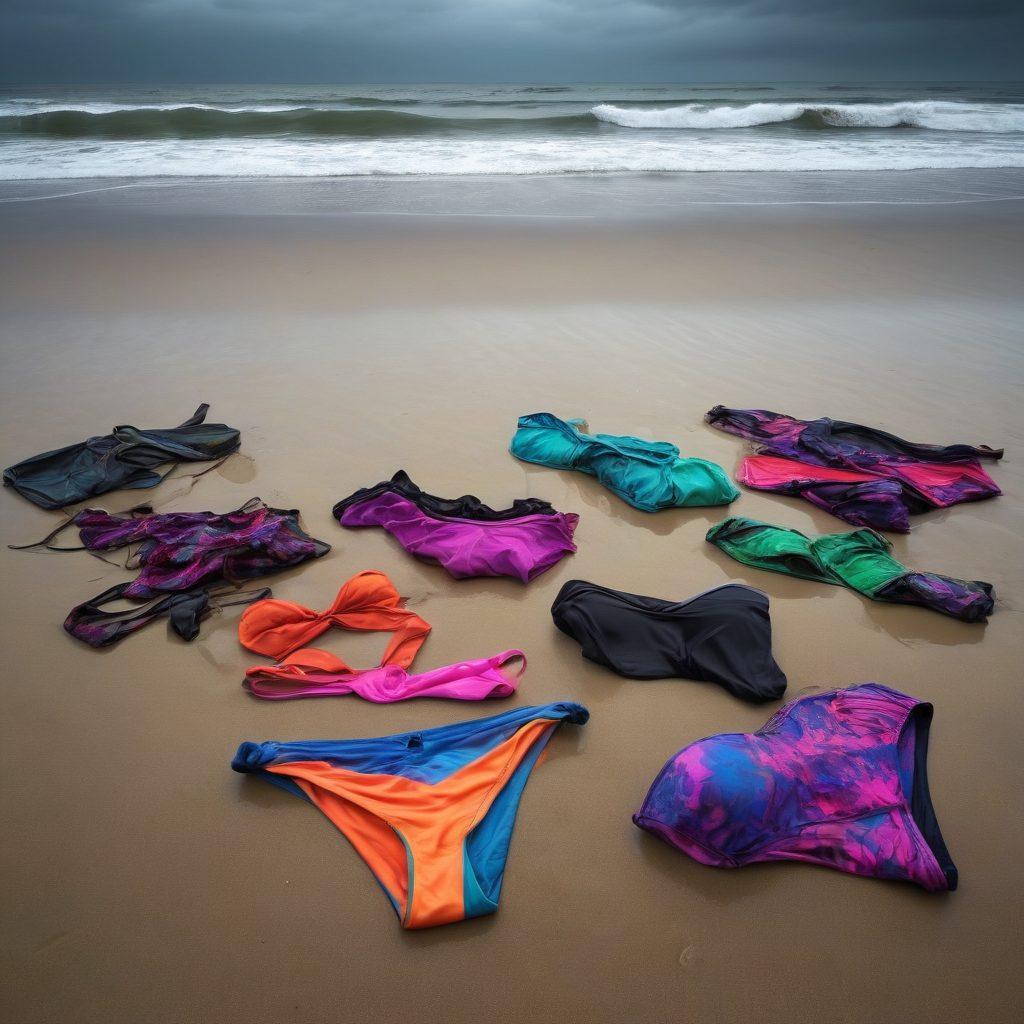From Sunshine to Sadness: Exploring the Gloomy Side of Bikini Fashion and Youth Trends
Bikini fashion has long been associated with sunshine, laughter, and carefree beach days. Yet, behind the vibrant colors and stylish designs lies a darker narrative—a story intertwined with youth trends that often shifts away from joy and into the shadows of melancholy. With the rise of social media and digital expression, the image of swimwear and beachwear has evolved, giving way to a spectrum of emotions that include sorrow and dejection. So, what has turned this symbol of summer into a canvas for deeper issues?
Take a moment to think about the last time you scrolled through your feed. You might have stumbled upon a picture-perfect bikini clad in all its glory. However, did you notice the subtle hints of sadness lurking beneath the surface? In a world where 'jailbait culture' and the pressures of teen fashion loom large, young girls are drawn into a cycle of constant validation and comparison. Instead of celebrating their bodies, many find themselves trapped in a struggle with self-image, leading to feelings of gloominess and dejection. As the Internet transformation bends reality, what messages are we really sending to the youth?
It's fascinating—and somewhat alarming—to see how bikini styles have transformed over the years. While once a source of empowerment and freedom, modern-day swimwear is often tied to online trends that promote unattainable ideals. The pressure to belong to the idealized perception of beauty can transform a day at the beach into an anxiety-inducing event. This commentary reflects not only the fashion industry but also a larger narrative within the net community about self-worth, acceptance, and the longing for companionship amid an ocean of digital solitude. Could it be that the cheerful bikini—once a liberating symbol—has morphed into a haunting reminder of youth trends that often amplify insecurities?
Amidst this gloaming landscape of bikini fashion, it's crucial to initiate conversations. Let's consider the impact of swimwear advertising and social media influencers on young minds. Are we inadvertently contributing to a cycle where youth trends amplify sadness rather than celebrate youth? How can we shift the conversation around beachwear and help young women explore their unique styles rather than succumb to societal pressures? After all, swimwear should embody freedom and individuality, not chains of self-doubt. Taking a step back from filtering every moment may allow the digital expression of our youth to flourish without the weight of the world crushing it.
Ultimately, acknowledging the sorrow buried in vibrant bikini fashion sparks an essential dialogue about youth culture. For instance, fostering environments that encourage authentic self-exploration can motivate a generation to redefine what bikini styles represent. Instead of lengthy discussions that lead to fear, let's divert the conversation towards joy and self-acceptance. Perhaps by unveiling these darker shades of bikini fashion, we can inspire a resurgence of confidence and empowerment in our youth, turning the tides from sadness to a radiant embrace of individuality. After all, every young woman deserves to bask in the warmth of self-love without the clouds of comparison loaming over her head.
From Beach Bliss to Melancholy: The Influence of Swimwear on Teen Culture
Swimwear is often synonymous with fun, sun, and carefree beach days. Yet, beneath the shimmering surface of bikini fashion lies a darker undercurrent that affects our youth. The allure of bikini styles has gripped teenage culture tightly, transforming swimwear from a symbol of summer joy to a complex emblem of societal expectations. How did something as innocent as beachwear become tangled in the web of teen fashion's pressures? As we dive into the influence of swimwear on teen culture, we uncover a spectrum ranging from beach bliss to the haunting shades of melancholy.
Once upon a time, bikini fashion was all about freedom and celebration of youthful bodies. The sun, surf, and sand seemed like the perfect backdrop for enhancing adolescent joy. However, as swimwear trends evolved with the rise of internet culture, the simplicity of beachwear took a backseat. The emergence of jailbait culture—where young girls are objectified in digital spaces—casts a shadow over the original intent of bikini styles. Rather than serving as mere clothing for fun and sun, they often evoke dejection and sorrow, forcing teens to grapple with unattainable body standards propagated by the net community.
Imagine scrolling through a social media feed filled with pictures of perfectly curated beach photos showcasing an endless parade of flawless bodies in swimwear. The cheerful beachwear brimming with vibrant colors often masks an undercurrent of despair. Teens today are not just comparing their bodies to the idealized versions they see on their screens; they are also contending with the pressures instilled by youth trends that prioritize appearance over self-acceptance. Are our digital expressions fostering a culture of genuine connection or one rife with melancholy?
Teen fashion, influenced heavily by online trends, can often feel like a battlefield. Between the desire to fit in and the pressure to shine brighter than the rest, many young people find themselves wrestling with their self-esteem. It’s easy to get lost in the sorrowful cycle of comparison that social media perpetuates. Questions arise: Is the pursuit of the perfect bikini for summer fun overshadowing the emotional turmoil that comes with constant self-scrutiny? With each click, we witness the rise of sadness that permeates the world of beachwear, a place that was once defined by joy and freedom.
As we examine the intersection of swimwear fashions and teen culture, we must acknowledge the influence of the digital realm. While some may celebrate the captivating aesthetic of bikini styles, it’s imperative to address the spectrum of emotions tied to them—especially in the face of looming melancholy. Feeling empowered in your beachwear should be about embracing who you are, not about measuring up to a filtered image. A shift towards body positivity and authentic digital expression can redefine how teens perceive swimwear, allowing them to reclaim their joy where it initially bloomed: by the beach.
The Sorrowful Side of Swimwear: How Bikini Styles Reflect Digital Dejection and Youth Trends
Picture yourself on a sunny beach, surrounded by laughter, sunlight glistening off the waves, and the warm sand beneath your feet. It’s easy to embrace the carefree spirit of summer when everyone is donning the latest bikini styles. But beneath the surface of these colorful swimwear trends lies a different story—a story of sorrow and melancholy. As we dive deeper into the world of bikini fashion, we must confront the digital dejection that often accompanies youth trends in the age of the internet.
The bikini, once a symbol of liberation and body positivity, has evolved into something more complex in recent years. In today's net community, bikini fashion often gets intertwined with the darker elements of online trends, encapsulating a sense of jailbait culture that weighs heavily on our youth. Have you ever noticed how a single picture can elicit thousands of reactions, often leading to judgment rather than appreciation? This reflects a kind of digital expression that can leave young people feeling isolated and dejected, even when surrounded by imagery of perfect, sun-soaked lives.
As the popularity of swimwear continues to surge, it is essential to think about what these bikini styles are saying about the teenagers who choose to wear them. The swimwear that once brought joy now carries a heavy burden, becoming a source of anxiety for many. When did beachwear go from being a delightful escape to a measured outcome of likes, shares, and comments? How did these bright, cheerful garments become associated with feelings of sadness and self-doubt?
The exploration of these themes speaks to the heart of our youth culture today. Young people are constantly bombarded by images idealizing an unattainable standard of beauty, leading to a disconnection from their intrinsic worth. It's a tough place to be in—balancing the desire to fit in with the need for authenticity. The sorrow that accompanies young people in the world of bikini fashion is something we should all take seriously. A swimwear choice shouldn't dictate one's self-worth or invite judgment from the masses.
Ultimately, it’s up to us to reshape the narrative surrounding swimwear, to encourage a culture where beachwear is a source of self-expression rather than a mechanism for comparison and sadness. Next time you slip into your favorite bikini or admire someone else's beachwear look, ask yourself: what does this represent? Can we shift our perspective from sorrow and gloom to joy and self-acceptance? The power lies within us to redefine bikini fashion as a celebration of individuality, resilience, and connection in a world that so often feels isolating.


